Artist Interviews 2024
Ioana Pioaru 
By Julia Siedenburg

Ioana is an exceptional artist who mainly focuses on historic architectural and nature-related drawings. Her work looks so real yet almost magical by how perfect it is. As she directs your focus to appreciate every single little detail from the shape of leaves to the thickness of the stem or the unique brickwork of an old brownstone house to the delicate window accents of a building, she brings wonder and appreciation to things we are so used to overlooking.
As she reminds us about the connection between nature and architecture, she also teaches us to take our time and look more closely at the beauty around us.
Besides creating these beautiful, intricate ink drawings as her full-time job, she has also brought out a book full of illustrations inspired by different London pubs, has lent one of her artworks to the coffee label Pepita, and if that is not an accomplishment ( and work) enough, she is also currently prepping her first very own art workshop that she will host soon.
As you can probably tell, dear reader, I am very excited to have this talent part of this issue so that you can learn many more things about her. Please enjoy:
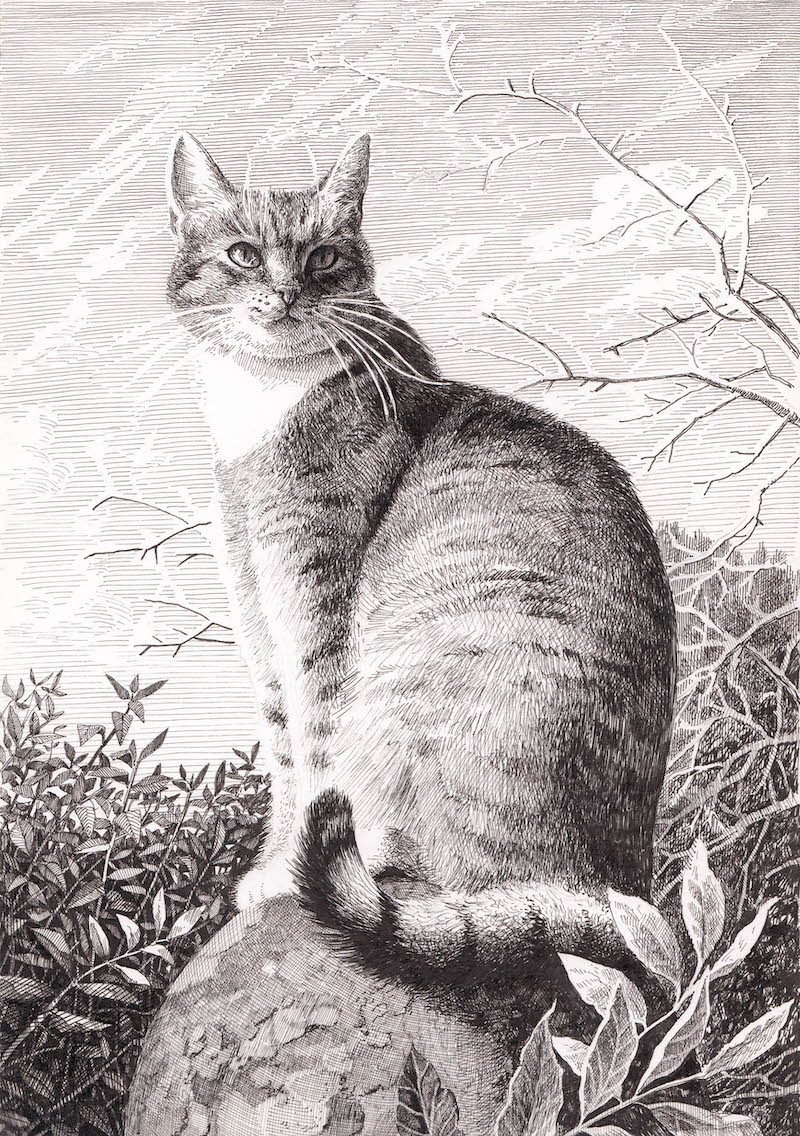
What makes you want to sit down and create your pencil drawings every day?
Several things motivate me to create art. Firstly, I love it, I enjoy every step of the process.
I like the initial stages of a new project because they are thought-provoking and they put my brain to work, to be creative, to come up with ideas and solutions.
I always spend time planning my drawings, thinking carefully about the subject, about what it means to me and why I want to approach it, journaling about the concepts and feelings behind each project.
Then, when it comes to making the drawings themselves, the technique of ink on paper is just pure joy for me, and it’s enough to keep me bound to the work for hours each day.
The repetitive stages of a project where not much thinking is involved, like hatching and cross-hatching large areas, are something I look forward to also, because they give me the opportunity to
listen to audiobooks and podcasts that I wouldn’t have time for otherwise. It is the only type of multi-tasking I am capable of, but it feels so good to feed my brain at the same time as using my hands to draw.
And sometimes I like to just work in complete silence and listen to the thoughts that coagulate around the work I make.
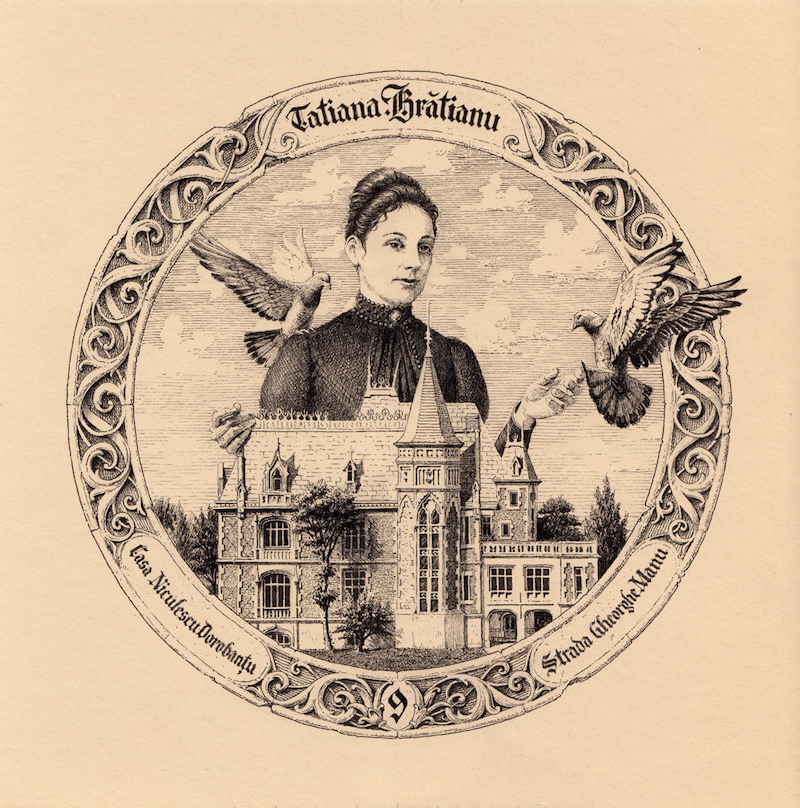
Who is your biggest creative influence and motivation?
Oh, I have so many influences, that I cannot point to a single most important one. I’m inspired by the wonders that artists Franklin Booth and Sydney R. Jones managed to achieve with ink drawing,
by how they elevate the simplest and most modest of subjects with the care, precision, and subtlety of their pen work.
I am inspired by author Alice Munro and how her stories, both raw and delicate, hint at the depths of the human heart.
I am influenced by the literature of Mircea Cartarescu and how his exquisite use of language creates fabulously rich worlds in the reader’s mind, as clear and vivid as photographs or films.
I am influenced and inspired by the unostentatious beauty of English vernacular architecture.
I am inspired by the stylistic mess that characterizes the architecture of Bucharest, by the random mix of old and new, by the interplay of beauty and grotesque.
I am influenced by the music of Bach. As for motivation, after many years of looking for it in the wrong place,
I found that the best place to find it is in myself and in my core values: beauty, patience and attention. As soon as I defined what they meant for me and my art, they became the fuel and purpose of my entire practice.
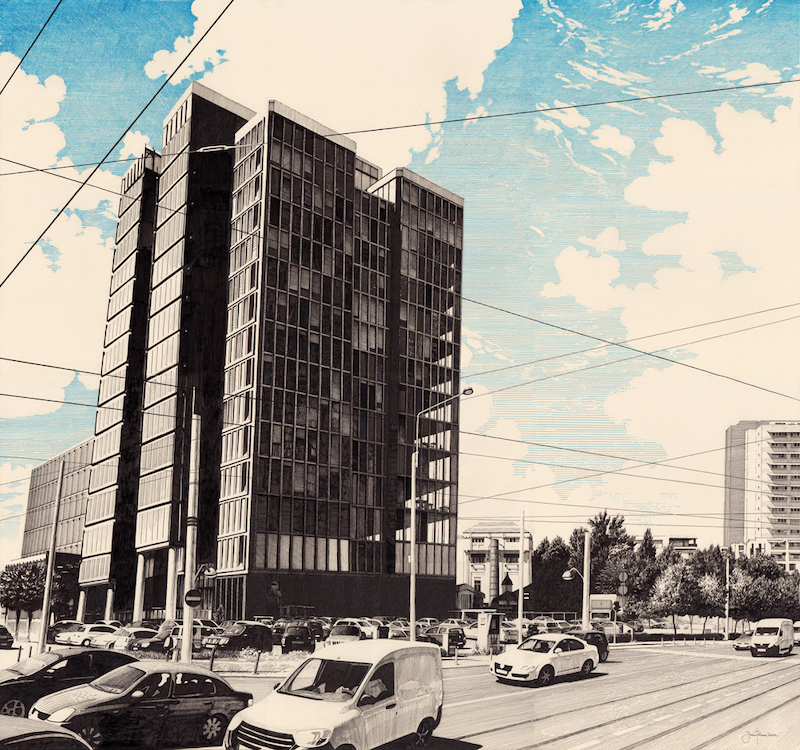
Would you say your mood influences your work?
Often, it’s the other way around. Because I treat my art practice as a job, I go to my studio every day and start to work regardless of my mood. If I am feeling low, drawing is guaranteed to change that, because of how much I love it. For me artmaking is healing. There is a space of peace and tranquility that is established around my art, and as soon as I allow myself to enter that space, I can disconnect from everything else and carry on with the work calmly. Even the less enjoyable work entailed by having to market my own art is likely to get me out of a bad mood, because, again, it forces me to disconnect from whatever it was that put me in that mood, and to engage with the task at hand.
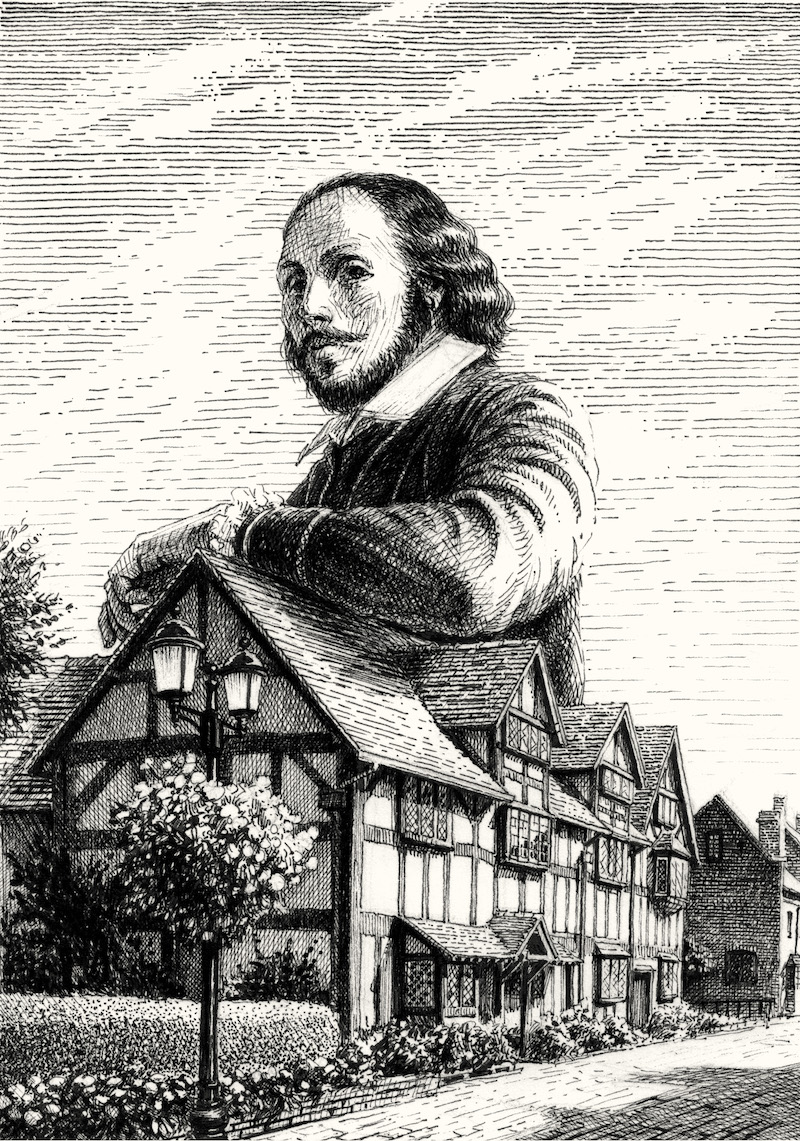
You are a true master in creating the most hyper-realistic drawings of nature and architectural imagery. What is it about those two themes that bring you so much joy?
I’ve always been drawn to architecture, when I was a kid for a long time I wanted to become an architect. Particularly traditional or historic architecture fascinates me, because of the care and attentiondetailails that used to be intot in building and decorating. I think back then people were more invested in creating beautiful, aesthetically pleasing buildings whereas today most contemporary architecture is simplified, stripped of almost any trace of decoration, and focused on utilitarianism. Cost efficiency is invoked as the principal reason for this, but I am not too convinced by that. I think it’s more likely that contemporary architects want to distance themselves from previous styles and make their own mark. It’s understandable to a point, but I think this has led to a big divide between their work and ‘normal people’s’ taste and need for beauty. Modern and contemporary architecture is beautiful in a sort of intellectual, abstract way that can be difficult to understand by many people. In my work, I try to depict both. The dialogues that arise between old and new architecture, and the tensions too, particularly in urban environments, are very interesting to me and I like to capture that in my work.
I love the variety of textures and shapes in plants and trees, but apart from that, it’s the deep connection between nature and architecture that I try to capture in my drawings, the stories they hint at, around the subject of habitation and human life. That connection is much more harmonious in the case of traditional architecture, and that’s one of the reasons why I’m drawn to old buildings. They have a more elegant and inconspicuous way of sitting within the landscape, of complementing it rather than fighting it. And that dialogue is such a delightful source of beauty. Again, in urban environments there is a tension between nature and architecture, nature is limited to small, carefully ‘manicured’ spaces, or otherwise springs rebelliously from the most unexpected spots until it is removed. Whereas in rural areas, for example the English countryside that I absolutely adore, architecture echoes the environment so charmingly, through its colours, shapes, and materials. I think the nature-architecture dialogue in both cases says something very subtle and touching about the people inhabiting those places.

Drawing such intricate buildings must take a lot of time and patience. How long on average does it take you to finish a piece? Do you draw them from memory or with the help of reference photos?
It can take me a day to draw a small piece of about 4 x 6 inch (A6) and it can take me over a month for large ones. A few years ago, when I first decided to give in to my love for traditional ink drawing (for the pure pleasure it allowed me), I was only creating very small pieces to have the satisfaction of finishing an artwork in a single day. There was a lot of doubt and anxiety around my practice at that time, so this approach helped me build a coherent and quite impressive body of work, expand my drawing skills through the sheer amount of practice it implied, and boosted my confidence. As a result, nowadays I am much more inclined to spend weeks on a single piece of art because I know that it is worth my time and the result will be something I can be proud of.
As for my references, normally I use my own photos, or photos provided by my clients, but sometimes in certain projects I also draw certain elements from imagination. For example, the drawing collage ‘Berzei 2’ contains a few elements, such as the cat eyes, the lens on one of the roofs, and steampunk / industrial imagery, that I just made up.
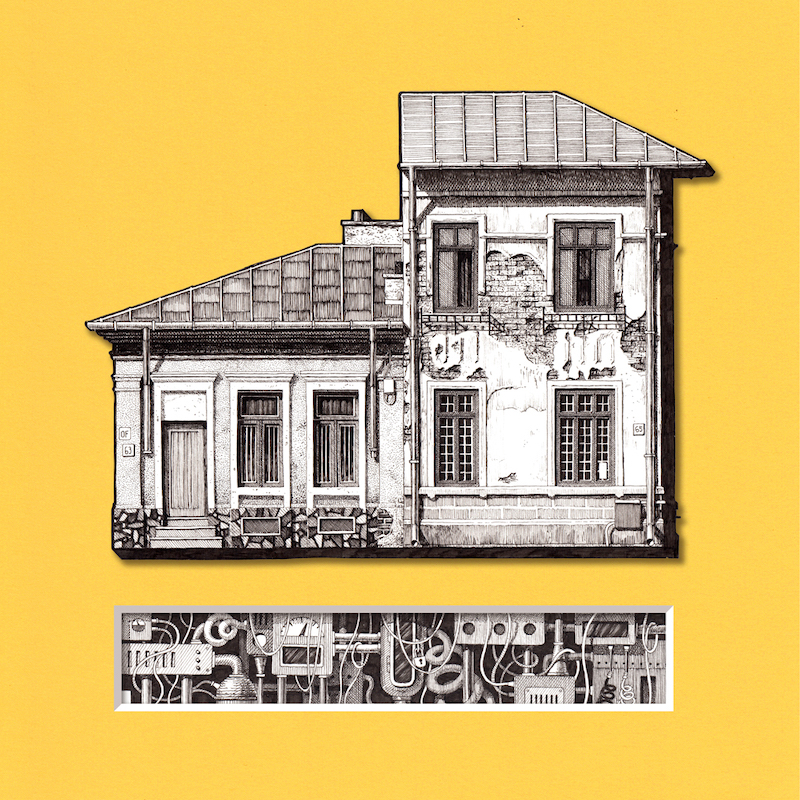
Please tell us a bit about your childhood and upbringing. Did you find your way to the arts early or later in your life?
I enjoyed drawing ever since I was 2 years old. All through my childhood and teens, drawing and painting were my favourite activities. Everyone around noticed that I was good at it, but I didn’t envisage a future as an artist. I had adopted my family’s general opinion that it is not possible to make a living as an artist, that such a career would be too unstable, and I was echoing that whenever the subject was brought up. In high school, I studied literature and foreign languages, with an idea to maybe become a translator, or something along those lines. In my free time I joined an art club because drawing was still my favourite hobby and I didn’t want to ignore it completely. The teacher I had at the club kept praising my work and encouraging me to consider going to art university, and finally managed to convince me and my parents that I had to at least take the entrance exam. So, I went to Bucharest to find out what the requirements were for doing that. Everyone who took the exam could undertake a one-month intensive training course beforehand, which I enrolled for, being sure that it was just a formality and that my amazing native talent was more than enough to pass the exam with flying colours.
On the first day of training, I was shocked to realise that everyone who was there was better than me. Apart from my ‘talent’, I had no knowledge of the fundamentals of art or any art theory. My ambition woke up immediately and I was determined to learn. I put my head down, I did the work, and I absorbed as much information as that one-month training allowed me, I took the exam and I passed. I don’t think I have ever felt so proud of myself in my whole life. So much so, that I completely forgot that I went there with no intention of actually enrolling for the undergraduate degree. But I did enroll and I loved every minute of the time spent in uni. I learned a lot and if I had been a bit more mature, I would have learned even more. At that time, finally, I started to believe in a future as an artist.
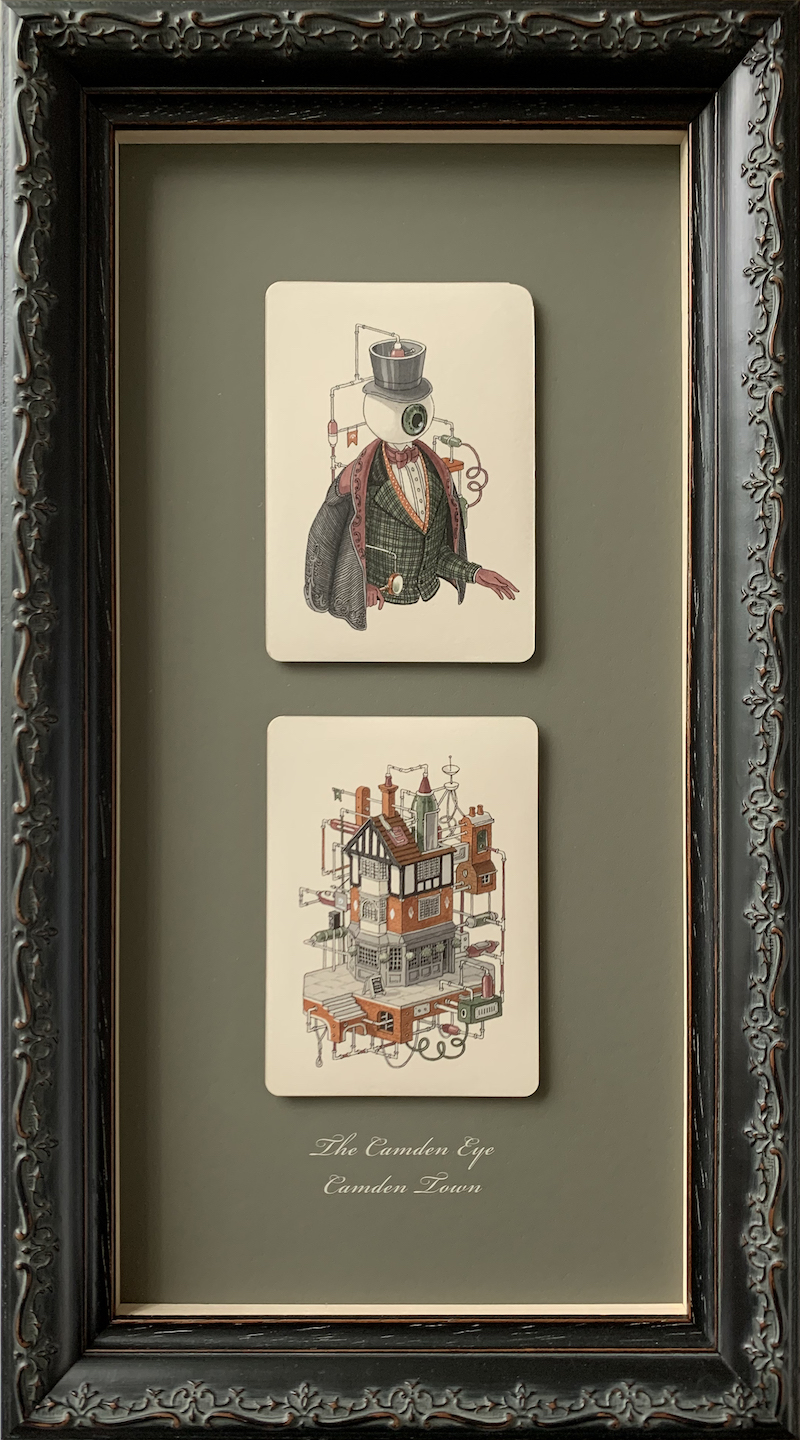
Your work has also been featured on Pepita Coffee Tins. How did this collaboration come about?
The team of Pepita Coffee discovered my work on Instagram, they liked it, and suggested the collaboration. I like the idea of coffee tins that you can repurpose after finishing the coffee, and tins that have beautiful art on them are even more likely to be up-cycled. I also saw this as a way for my art to get into more people’s homes in the form of an affordable and practical product. Not everybody can afford my prints or originals, but a £20 luxury coffee tin is something that most people can treat themselves to.
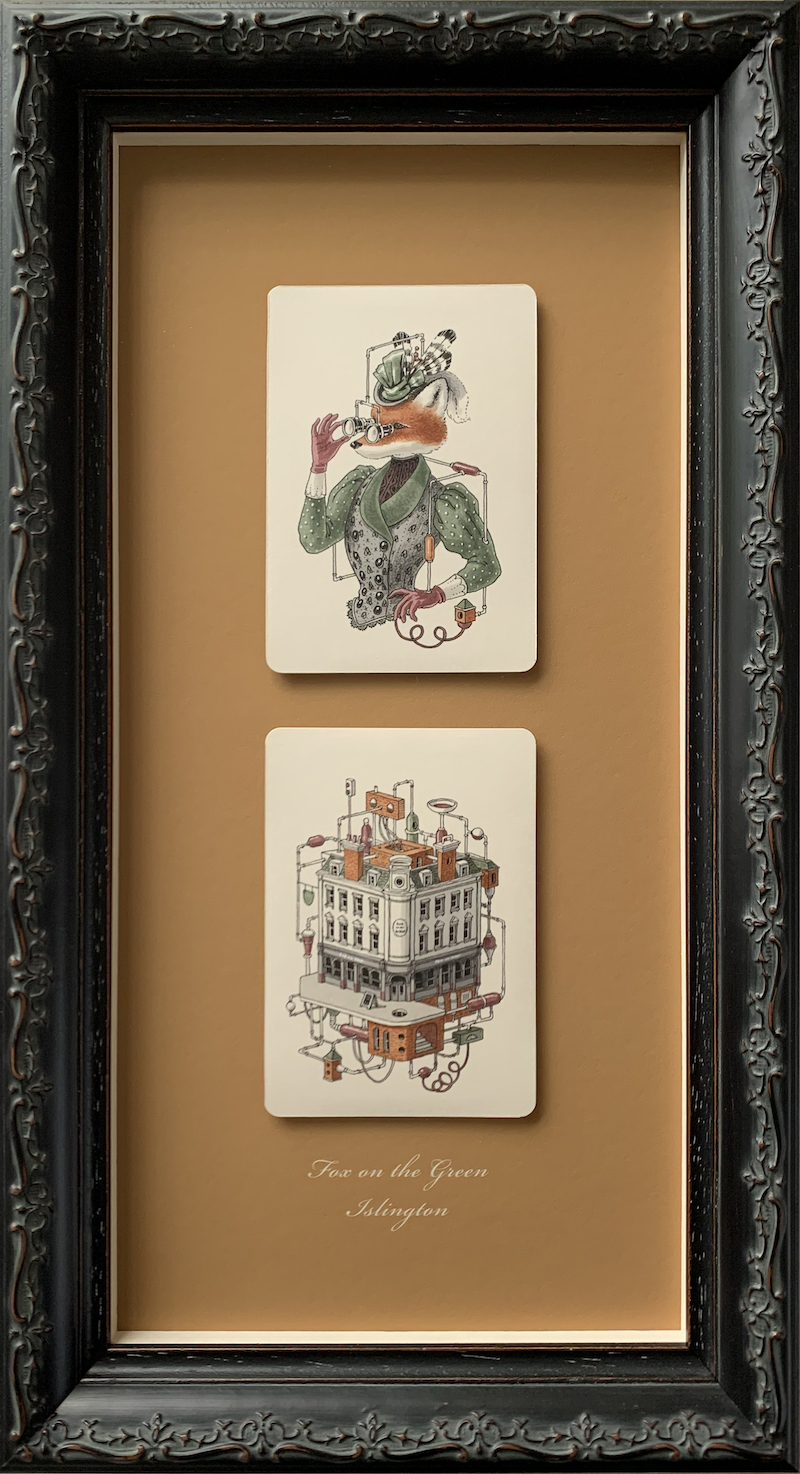
Your illustration book “Your Pub Chronicles” seems to have been a longer passion project of yours. What was it about London Pubs that inspired you specifically and what was the process of having this book made like?
Around 2019 I created a beautiful series of miniature drawings inspired by London pubs, their architecture, names, and signage. Particularly the evocative names given to pubs, for example Cat & Mutton, Fox on the Green, the Jugged Hare, The Camden Eye, inspired me to imagine a unique, fantastical personality for every one of the eighteen pubs included in the project. I employed a style of drawing which lends itself to a multitude of interpretations, giving viewers the freedom to develop their own reading of the mysterious characters I created. Then I devised a way of framing the drawings two by to, in a style that enhanced their jewel-like delicacy and pastel colours - floating above backgrounds in matching tones, with the name and location of the pub in white lettering, in vintage style box frames.
Again, thanks to Instagram, Two Worlds Books discovered the project, which I had always intended to turn into a commercial product of some sort. Two Worlds invited me to collaborate on creating a customizable book with these drawings – a mini guide and companion for a ‘stylish’ pub crawl, designed for people to record details of their visits around these iconic pubs of London. The most fun detail about this book is that when you purchase it, you can customize the cover with your name and avatar.
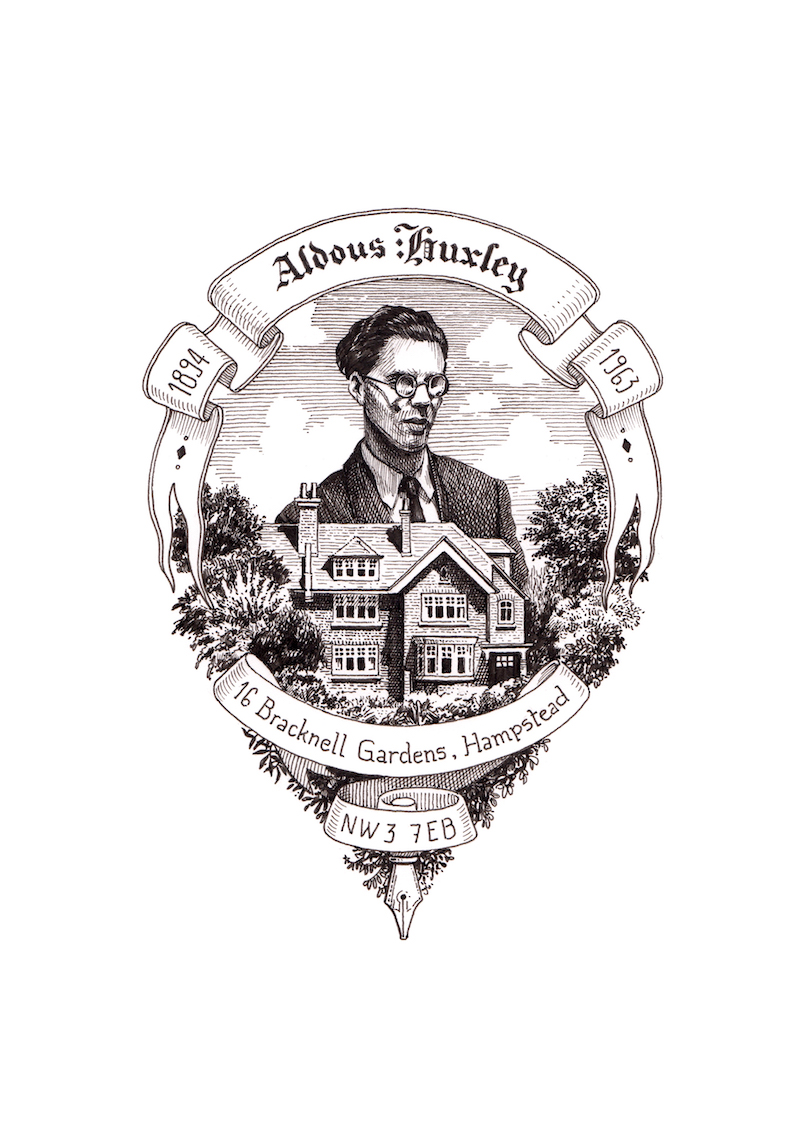
You started a waitlist for joining a Flower Drawing course led by you which is an amazing way to share your talent with others. Can you give us a bit of insight into what some of your tips and tricks are to become better at drawing?
Sure thing! Firstly, define why it is you want to make art, what is the reason behind your desire to put pen to paper. The answer to this doesn’t have to be super-complicated, but when you take some time to think consciously about it, this will help you in those moments when you feel unmotivated and want to give up. Many people ask me how to find the patience to sit down and draw for long hours, and in my opinion, patience comes from doing something you love and consider important. So that when impatience comes over you, you can remind yourself why you’re doing what you’re doing. Your answer will bring you back on track. I don’t think it’s realistic to expect to have patience for something you don’t care about deeply.
Secondly, practice, as often as you can. You don’t have to create masterpieces every day, but it is important to continue to train your hand, constantly, with whatever exercises you can think of. This is going to build your confidence, develop your precision, and help you understand your medium better and better.
Thirdly, don’t be afraid to make mistakes because mistakes are the best way to learn. Some people ask what I would do if I were to make a mistake in one of my drawings after spending hours on it. The truth is that I make mistakes all the time, but only tiny ones that can be ignored. With an unforgiving medium like drawings, you must learn to go along with tiny errors, find ways to integrate or work around them, or simply move on, otherwise if you’re a perfectionist you’ll never finish a single piece. Besides, the time spent planning, before I start the inking minimises the risk of making major mistakes that cannot be ignored. The people who look at your art don’t hunt for mistakes, they just take the work as it comes. What they see and feel is the overall image, the message of the work, the thoughts, emotions, and energy you put in it. So, make sure you put the right energy in, because whatever it is, you’re passing it on.
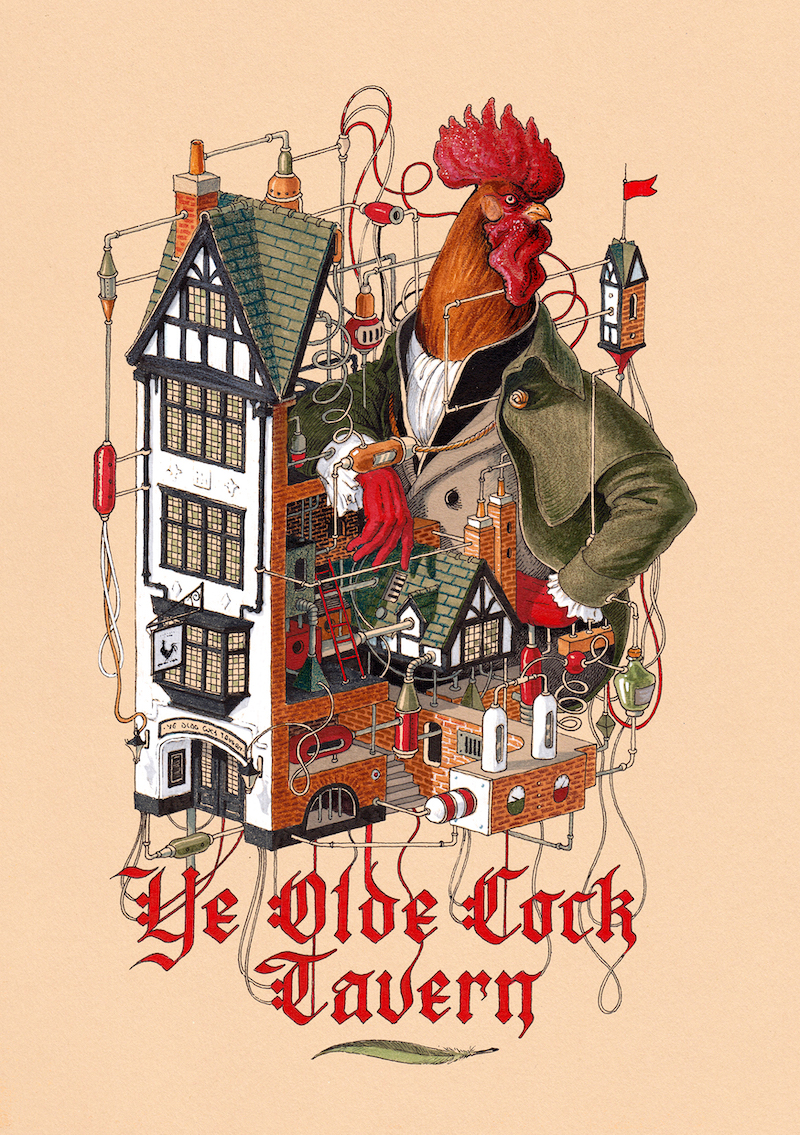
What are your plans, wishes, and dreams for the future?
If my eyes, hands, and general health help me, I want to continue to make art and share it with the world for as long as possible. I believe that beauty will save the world. This is a quote from Dostoevsky, but I resonate with it 100%. Why do I believe that? Because I know how beauty, in its many forms, can move people. When you connect with beauty, whatever that may mean for you, you soften up, and peace settles into your heart, even if only for that short amount of time that your encounter with beauty lasts. Knowing that beauty brings peace into people’s hearts, I can use it in my art to increase those moments of peace that occur around the world. That is my mission, and that gives purpose to everything I do.
|
|

